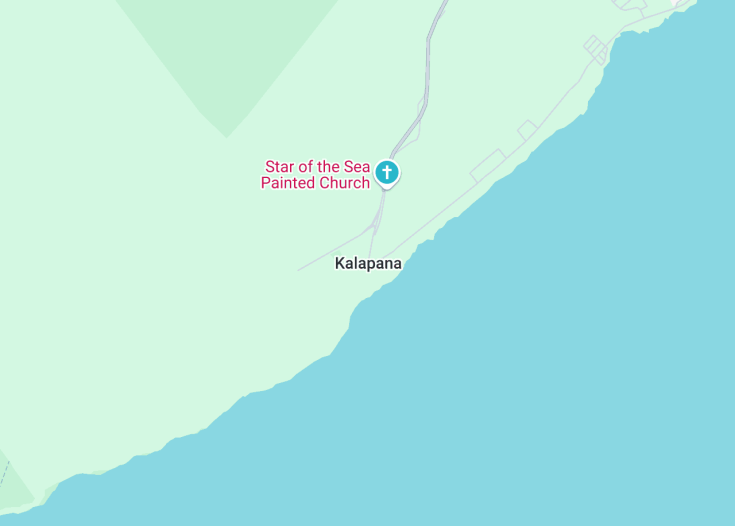Kalapana, Hawaii, once a thriving fishing village, has since been largely covered by lava flows from the Kilauea Volcano, most notably in 1990. Its dramatic history encapsulates the raw power and beauty of nature’s transformations. Today, it attracts visitors from around the world, drawn by its unique black sand beaches, stunning coastal vistas, and the opportunity to witness regrowth in a landscape reshaped by volcanic activity. The area offers a poignant reminder of the dynamic nature of the Earth, making it a fascinating destination for those interested in geology and natural history.
Be sure to visit the new black sand beach formed from the cooled lava, which offers a rare opportunity to witness geological transformation firsthand.
When planning your visit, consider a guided tour to safely explore the area and gain insights into its geology and recovery from the 1990 lava flow.
Top things to do & see in Kalapana
Select the following sights and activities to discover best tickets and tours available in Kalapana.
Kalapana: A Resilient Beauty
| Country | Hawaii (USA) |
| Time in Kalapana | GMT-10 |
| Language spoken | English |
| Population | 85 (U.S. Census Bureau) |
| Currency | United States Dollar (USD $) |
| Airports |
|
Kalapana, once a thriving community in Hawaii (USA), is renowned for its stark landscapes shaped by volcanic activity and its resilient spirit. Destroyed by lava flows in the 1990s, today, Kalapana stands as a symbol of nature’s power and regeneration. This village’s history is interwoven with the Kilauea volcano, whose eruptions reshaped the landscape repeatedly. Visitors flock here to witness the rebirth of flora and possibly to catch a rare glimpse of lava flows entering the ocean, which offers a once-in-a-lifetime spectacle.
Where is Kalapana?
Kalapana is located in the Puna District on the southeastern coast of the Big Island of Hawaii, USA.
Distances:
| Route | Distance by car | Time by car |
|---|---|---|
| Hilo to Kalapana | 34 miles | 50 minutes |
| Kona to Kalapana | 94 miles | 2 hours 34 minutes |
What is Kalapana famous for?
Kalapana is famous for its black sand beaches, mesmerizing lava flows, and as a stark reminder of the ever-changing landscapes caused by active volcanic activity on the Big Island of Hawaii.
History
Pre-contact Period (Pre-1778)
The history of Kalapana, located on the southeastern coast of the Island of Hawaii, begins long before the first European contact. Known by early inhabitants as a sacred place, Kalapana thrived as a fishing and farming community, utilizing the fertile volcanic soil and abundant sea to sustain its population. The area was also reputed for its powerful spiritual significance in Native Hawaiian culture, hosting numerous heiaus (temples) and religious sites.
The Monarchic Era (1778-1893)
With the arrival of Captain James Cook in 1778, Kalapana started seeing significant changes alongside the rest of Hawaii. It became a notable area during the Kingdom of Hawaii under the rule of Kamehameha the Great, who unified the islands. During this time, its strategic location and resource-rich environment made it an essential spot for the emerging Hawaiian monarchy, maintaining its cultural and economic importance.
The Territorial Period (1898-1959)
After the overthrow of the Hawaiian monarchy and the subsequent annexation by the United States in 1898, Kalapana entered a new era. The early 20th century saw the introduction of sugarcane plantations, drastically changing the landscape and local economy. However, Kalapana maintained its cultural heritage, continuing to be a hub for Native Hawaiian traditions and practices.
The Contemporary Period (1960-Present)
The recent history of Kalapana is marked by the devastating lava flows from the Kilauea Volcano, particularly those that occurred in 1990. These flows destroyed much of the town, including homes, businesses, and key cultural sites, forcing many residents to relocate. Despite this, the area remains a poignant symbol of natural power and regeneration, as new land forms and the community gradually adapts and rebuilds. The resilience of Kalapana and its people mirrors the enduring spirit of Hawaii itself.
Visit Kalapana
What to see and do in Kalapana, Hawaii (USA)
Visiting Kalapana offers a unique opportunity to witness the regenerative power of nature alongside deep cultural heritage. Explore the new black sand beaches formed by volcanic activity, or visit the remnants of the town to see firsthand the impacts of lava flows. For an immersive experience, take a guided lava tour to see active flows safely and learn about the geology and history of the area. Don’t miss:
- Lava viewing areas for a chance to see active lava flows.
- Black sand beaches, especially the new ones formed from recent eruptions.
- Local markets where you can buy traditional Hawaiian crafts and foods.
Festivals and Events in Kalapana
Kalapana hosts several cultural events throughout the year that celebrate its unique heritage and community spirit. Notable among them is the Puna Music Festival, held annually in the spring, which features live music, hula performances, and local food vendors, celebrating the rich cultural mosaic of the region.
Best time to visit Kalapana
The best time to visit Kalapana is during the dry season from May to October. This period offers the most favorable weather conditions for exploring the outdoors and witnessing the volcanic landscapes without the interference of heavy rains.
Is Kalapana worth visiting?
Kalapana is indeed worth visiting for those intrigued by the dramatic natural processes and rich cultural history of Hawaii. The opportunity to witness new land being formed and to learn about the resilience of the local community offers a profound perspective on the power of nature and human endurance. Kalapana’s compelling landscape and the warm spirit of its people make it a unique and enriching destination.










